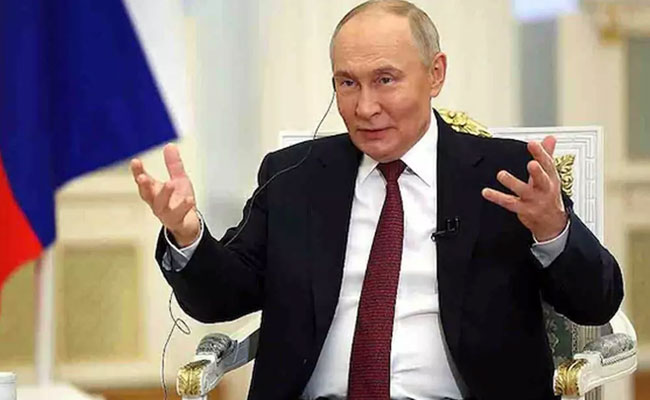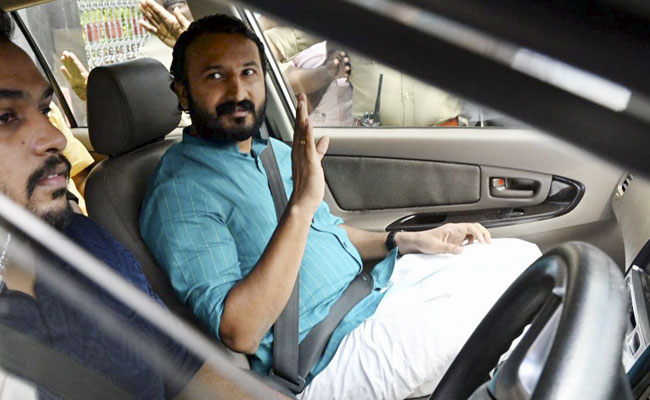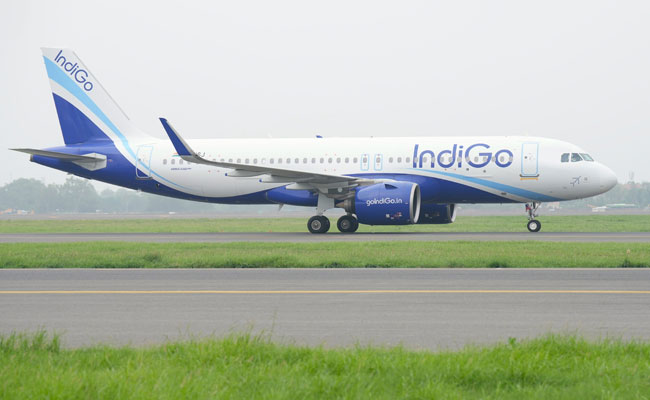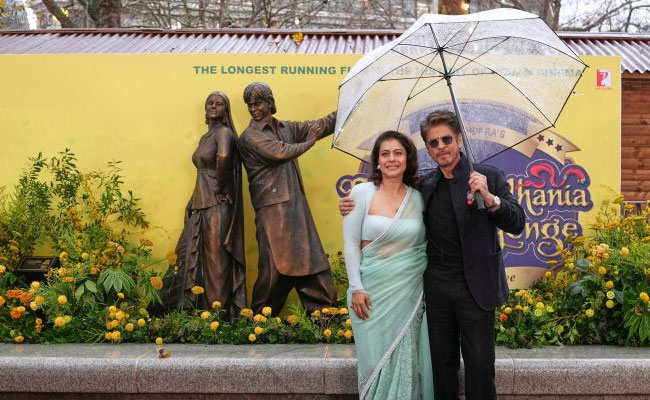Chennai: The year 2017 could be said to be one of mixed fortunes for the Indian space agency as it launched the much-awaited four-tonne rocket Geosynchronous Satellite Launch Vehicle-Mk III (GSLV-Mk III); put into orbit 104 satellites in a single mission; sent up the South Asia Satellite; and also crossed the double century mark of launching foreign satellites.
With the size of earth observation satellites reducing and the future trend moving towards a constellation of small satellites rather than a large one, India's space agency is developing a smaller rocket that can carry satellites weighing up to 500 kg.
But on the negative side, India's long-due satellite navigation system (NavIC) faced serious problems with the atomic clocks in a couple of satellites developing problems.
The clocks are important to provide precise locational data.
The mission to put into orbit a replacement for the first of the seven navigation satellites didn't succeed as the lighter Polar Satellite Launch Vehicle (PSLV) failed in its mission.
The year also saw India taking steps towards opening up the sector for private players as the government sought comments on its Draft Space Activities Bill.
The Indian Space Research Organisation (ISRO) had a great start with a record satellite launch and good going for the major part of the year but wound up 2017 smarting after an unexpected disaster.
In February India set a world record in the number of satellites launched in a single mission by successfully putting into orbit 104 satellites, including the country's own Cartosat-2 earth observation satellite.
This was followed by the copy book-style launch of the South Asia Satellite, intended to serve "economic and developmental priorities" of South Asian nations, using its heavier GSLV-Mk II rocket.
In 2014, Prime Minister Narendra Modi tasked ISRO to develop a satellite for use by the SAARC countries. But Pakistan declined the use of an India-developed satellite.
One of the unique aspects of the South Asia Satellite is that ISRO decided to have electric power for it -- without cutting down on the volume of traditional on-board fuel -- to check its performance for use in future satellites.
In May, India scored a double success, launching its latest -- and heaviest so far -- 3,136 kg GSAT-19 communication satellite with its brand new and heaviest GSLV-Mk III with a cryogenic engine.
While Indian space scientists named the 640 tonne rocket "fat boy", the Telugu media nicknamed it "Bahubali" as, like the hero in the massively successful film lifts a heavy Lingam, it carried the heaviest satellite by an Indian rocket.
The month of June saw ISRO completing yet another multiple satellite launch, putting into orbit the Cartosat satellite, Nano satellite NIUSAT and 29 foreign satellites from 14 countries.
In the process, ISRO crossed the double century mark in launching foreign satellites. India started launching foreign satellites in 1999.
The June month also saw India adding GSAT-17 to its fleet of communication satellites after it was launched into orbit by the heavy-lift rocket Ariane 5 from Kourou in French Guiana.
And there ended the tale of ISRO's success for 2017.
The last day of August turned out to be a black Thursday for ISRO as it suffered a serious setback after its PSLV rocket failed to deliver India's navigation satellite in its intended orbit.
The 1,425 kg Indian Regional Navigation Satellite-1H (IRNSS-1H), got stuck inside the rocket's upper deck as the heat shield did not separate to let it out.
"The rocket heat shield didn't separate. The satellite is inside the heat shield," ISRO Chairman A.S. Kiran Kumar said.
"The PSLV rocket has been successful for the past several years. So, the question of design failure does not arise. It could be an issue of a failed component or a process quality issue," M.Y.S. Prasad, a former Director of the Satish Dhawan Space Centre, told IANS.
While the Failure Analysis Committee (FAC) is yet to come out with its report on the cause of PSLV's failure, K. Sivan, Director, Vikram Sarabhai Space Centre, told IANS that failure of the pyro elements could be the reason for the non-separation of the heat shield.
Normally, the heat shield would separate after on-board computers give the command to ignite the explosives. The explosives would then ignite and explode to separate the two parts of the heat shield joined by bolts.
He said ISRO is further tightening the allowable dispersion, or variance from the ideal performance parameter, for all the systems in the PSLV.
Meanwhile, Sivan said the preliminary design for the proposed small four-stage rocket that would weigh around 100 tonnes is ready and its feasibility study has also been conducted.
The first rocket would be ready in two years once the project gets the necessary approvals, he added.
The PSLV rocket has three variants weighing between 230 tonnes and 320 tonnes, with a carrying capacity ranging between 1,100 kg and 1,900 kg.
Looking forward to 2018, Sivan said it is going to be an eventful year with several launches, including the country's second Chandrayaan moon mission.
Sivan said ISRO will be launching a Cartosat satellite and several foreign satellites as piggy-back with the PSLV rocket some time in January 2018.
He said the country's heaviest communication satellite -- the GSAT 11, weighing over five tonnes -- would be launched next year by Arianespace's Ariane rocket.
2017: Indian space scene in capsule
* Enforcement Directorate (ED) attached Rs.79.76 crore funds of Devas Multimedia Ltd under the Prevention of Money Laundering Act (PMLA) for its alleged illegal deal with ISRO's commercial arm Antrix Corporation
* Renowned Indian space scientist U.R. Rao passed away aged 85
* Launched four-ton capacity rocket GSLV-Mk III
* Put into orbit South Asia Satellite
* PSLV rocket failed to launch navigation satellite
* Three atomic clocks in first navigation satellite failed
Let the Truth be known. If you read VB and like VB, please be a VB Supporter and Help us deliver the Truth to one and all.
New Delhi (PTI): The India-Russia collaboration is not directed against any country and it is solely aimed at safeguarding the national interests of the two sides, Russian President Vladimir Putin has said against the backdrop of Washington's aggressive approach towards New Delhi and Moscow.
In the context of India's energy ties with Russia, Putin said certain "actors" dislike New Delhi's growing role in international markets in view of its close relations with Moscow and these elements are aiming to constrain India's influence for political reasons by imposing "artificial obstacles".
In an interview to India Today news channel that was released on Thursday evening, the Russian president, referring to Western sanctions against Moscow, said his country's energy cooperation with New Delhi largely "remains unaffected".
Putin landed in New Delhi this evening on a two-day visit to hold summit talks with Prime Minister Narendra Modi.
ALSO READ: PM Modi presents copy of Gita in Russian to Putin
His trip comes at a time India-US relations are going through possibly the worst phase in the last two decades after Washington imposed a whopping 50 per cent tariff on Indian goods, including 25 per cent levies for New Delhi's procurement of Russian crude oil.
"Neither me nor Prime Minister Modi, despite certain external pressure we face, have never approached our collaboration to work against someone," the Russian president said in response to a question on Washington's aggressive approach.
"President Trump has his own agenda, his own goals, whereas we focus on ours -- not against anyone, but rather aimed at safeguarding our respective interests, India's and Russia's interests," he said.
Rejecting Washington's objection to India procuring crude oil from Russia, Putin said if the US has the right to buy Russian fuel, why "shouldn't India have the same privilege".
"As for India's purchase of energy resources from Russia, I would like to note and have already mentioned this once, the US itself still buys nuclear fuel from us for its own nuclear power plants," Putin said.
The Russian president also responded to a question on India lowering procurement of crude oil from Russia in view of Western sanctions on Moscow.
ALSO READ: Russian president Putin arrives in Delhi on 2-day visit
"Well, there is a certain decline in overall trade turnover during the first nine months of this year. This is just a minor adjustment. Overall, our trade turnover stands almost at the same level as before," he said.
"I can't give you exact monthly figures right now, but trade in petroleum products and crude oil, as well as the production of petroleum products for consumers of oil, Russian oil, is running smoothly in India," he said.
Putin also said that India cannot be treated the way it was several decades back.
"Prime Minister Modi is not someone who succumbs to pressure easily. The Indian people can certainly take pride in their leader. This is absolutely obvious," he said.
"His stance is unwavering and straightforward, without being confrontational. Our goal is not to provoke conflict; rather, we aim to protect our lawful rights. India does the same," he said.
On the Ukraine conflict, Putin said he believed the US is actively seeking a solution to this problem. "I am absolutely certain, with no doubt at all, he (Trump) sincerely aims for a peaceful resolution."
Putin said Trump genuinely wants to end the hostilities and prevent further loss of lives. "But there could also be political interests tied to ending the confrontation between Russia and Ukraine, or economic motives too."
On bilateral trade, Putin said over 90 per cent of "our transactions are already conducted in national currencies".
"While some complications arise due to the presence of numerous intermediaries, there are also solutions," he said.
The Russian president also complimented PM Modi's leadership.
"Our collaborative endeavours with Prime Minister Modi carry significant weight because they transcend our mutual ties," he said.
"Given its direct relevance to both nations, ensuring stability in key areas of engagement is crucial, as it helps secure the fulfilment of our objectives. Prime Minister Modi sets very challenging tasks for the country --and for himself in the first place, then for the administration, and eventually for the nation," he said.
The Russian president did not give a direct reply to a question on if India was looking at procuring additional batches of S-400 missile systems.
"India stands out as one of our reliable and privileged partners in this area. We are not merely selling something to India and India isn't merely buying something from us in the sphere of defence and security.
"It is a different level, a different quality of relations we have with India, and we value this. We see how India values this relationship too," he said.
Putin said Russia is not simply selling defence technology to India but it is sharing it with the country.
"It is a very rare thing to see in the sphere of military-technical cooperation. It speaks to the level of trust between the two countries and the level of trust between the two peoples.
"We have a broad portfolio indeed, including naval construction, rocket and missile engineering, and aircraft engineering," he added.





